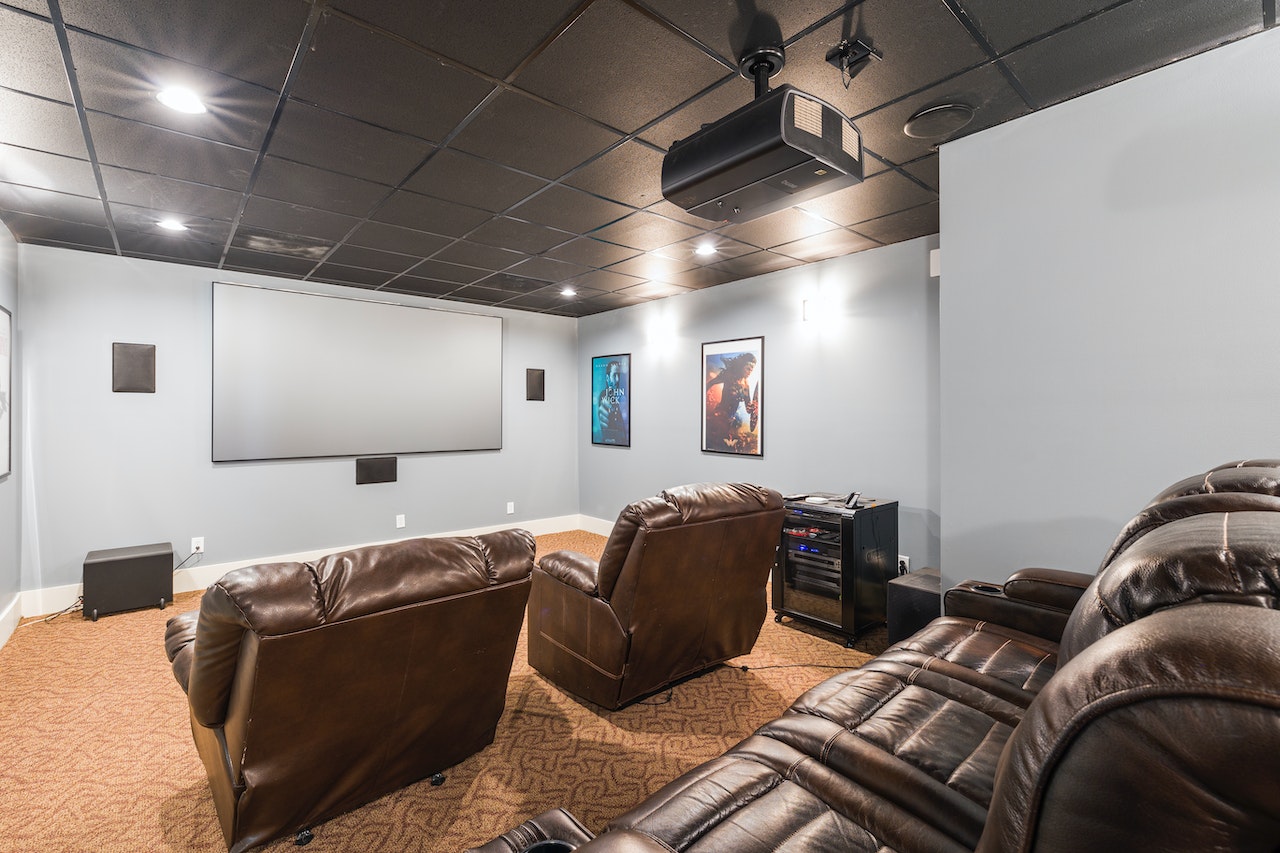A home cinema is a very significant, life-enhancing investment so it’s important to get the technical aspects of the system correct or you may not enjoy it as much as you should. Projector screens are considered a fundamental part of the home cinema to some, however there is something to be said about utilising current large screen television technology in a cinema room setting, so how do we decide between TV vs Projector?
In this article we will discuss the main ‘aspects’ of projector screens against current televisions for home cinema settings and most importantly, hope to help you decide which product is most suitable for your room to give you the best experience.
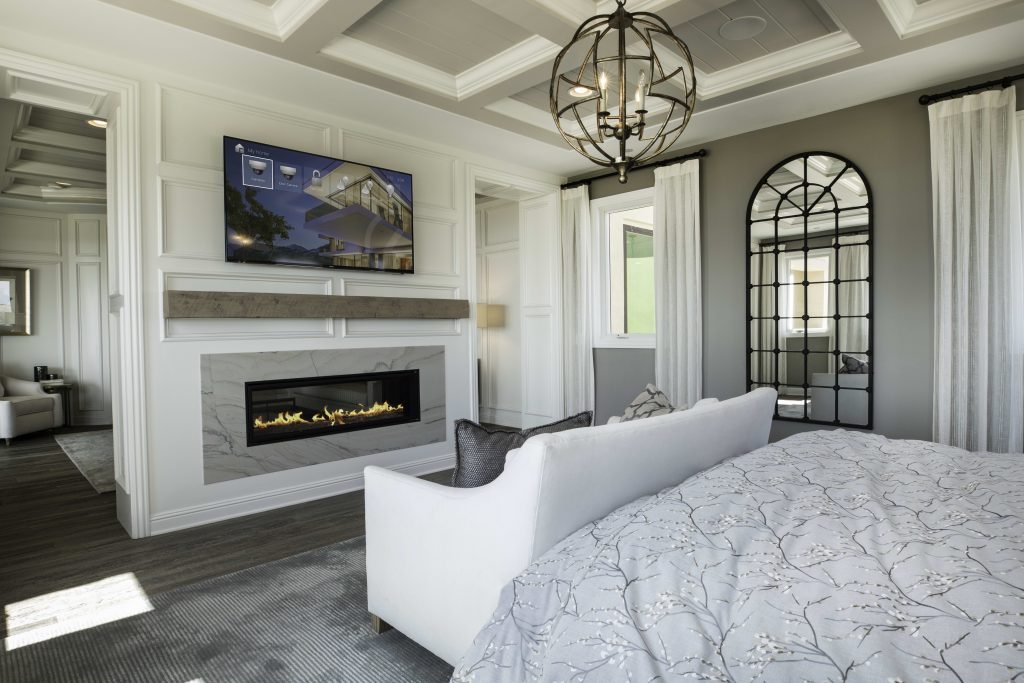
Let’s talk TV’s
Once upon a time in a land far away, in Hastings, East Sussex to be more precise, a young man called John Logie Baird invented the world’s first television! A claim to fame for the East Sussex town most famous for a battle many hundreds of years ago. This invention eventually made it into more than 27 million households in the UK by 2020, and the technology keeps growing and growing, quite literally.
The evolution of the flat screen TV made it possible to eventually mount these to a wall (see our article about wall mounting), which is something many people are doing in their living rooms. TV has however, until fairly recently, been outperformed on size at least, by the projector and screen combo. This is one of the reasons why projectors and screens are the choice for cinemas everywhere. However TV sizes and costs have somewhat crossed over somewhat, and you can now purchase 100” TV’s that can be wall mounted. Incredible.
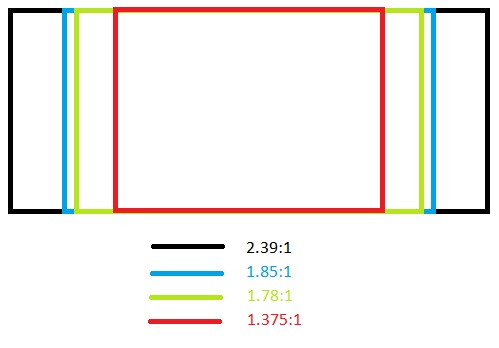
Aspect ratios are something that you don’t really have a say in when talking TV vs Projector, as your TV will come in one size and will use letterboxing (the black bits when watching content with wide aspect ratios such as cinemascope) or pillarboxing (when watching older content in ratios under standard content (16:9).
On a pure cost basis, a projector cannot compete on performance for the same money up to a certain size, however the projector and screen combo have a few tricks up their sleeve which answer the TV vs Projector debate.
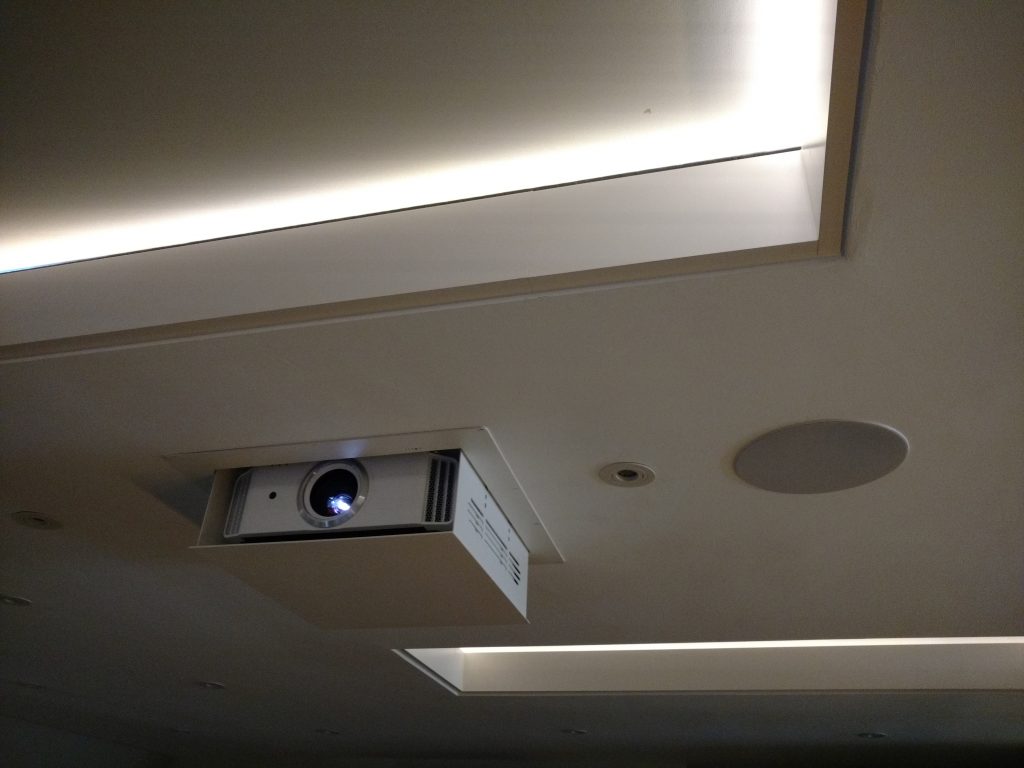
Let’s talk Projector and screen combo!
The projector was created through evolutions of visual projection inventions, from the magic lantern and camera obscura through to the laser projector we have today. Let’s just ignore the complete history of the projector for now and say the Lumiere Brothers invented the first motion picture projector and move on.
Shift into the 21st Century and we have projectors in cinemas in every town around the western world. In the home cinema market, we tend to work with projectors capable of producing screen sizes of around 100-140”. This is always decided by the room size, seating position and throw distance. For commercial cinemas you can and must go way larger than anything you’d need at home due to the aforementioned factors. The room sizes tend to be much bigger to ensure you can get more seats in, which has a detrimental effect on the experience when compared to a home cinema.
Now this isn’t a guide to choosing screen size, we will cover that in another Command AV Talk. What we will do however, is go over the basics to give you a feel for what’s required when contemplating the TV vs Projector debate for your home cinema. To meet THX standards in a cinema you are required to have a field of view of around 36 degrees horizontally. This means the angle between the edges of the screen from the main seating position should be around 36 degrees. This means there are a few measurements you need to have in order for this to work:
- Rooms dimensions
- Seating position
- Aspect ratio required
- Projectors throw distance
With these details we can make a few calculations and say exactly how big your screen should be.
Cinema Professional Installer image
Projector and screen combos have the aspect ratio advantage in the battle between TV vs Projector. A high-spec carefully commissioned home cinema will have content aspect ratios covered. Whilst your TV will have the letterboxing as previously mentioned, your cinema screen can be as wide as your desired aspect ratio, so letterboxing isn’t guaranteed. What you cannot avoid however, is pillarboxing when watching formats with less width. This is where masking comes in. You can get automatic screen masking solutions that mask the area of the screen that will be blank when a different aspect ratio is detected.

TV Vs Projector: Pro’s and Cons, how do I choose?
Choosing between a TV vs Projector and screen combo can be a difficult decision to make. That’s why we’ve written down a few of the most common Pros and Cons for each to help you decide what’s right for you. There is no right answer, you just need to consider what would create the right experience for your home.
| TV Pros Easy to install Good performance in ambient light Relatively cheap below 85” Built in applications/sources 8K technology is out there and 4K tech is becoming cheaper | TV Cons Expensive above 85” Doesn’t give the same feeling of being in a cinema Not acoustically transparent Letter boxing is inevitable reducing the image size on screen |
| Projector and screen pros Impressive cinema experience Large screen size Wide aspect ratios e.g. cinemascope You can get acoustically transparent screens so speakers can hide behind it | Projector and screen cons More expensive generally Cabling required at projector location Requires calibration Non-laser projectors require bulb changes are a specific number of hours |

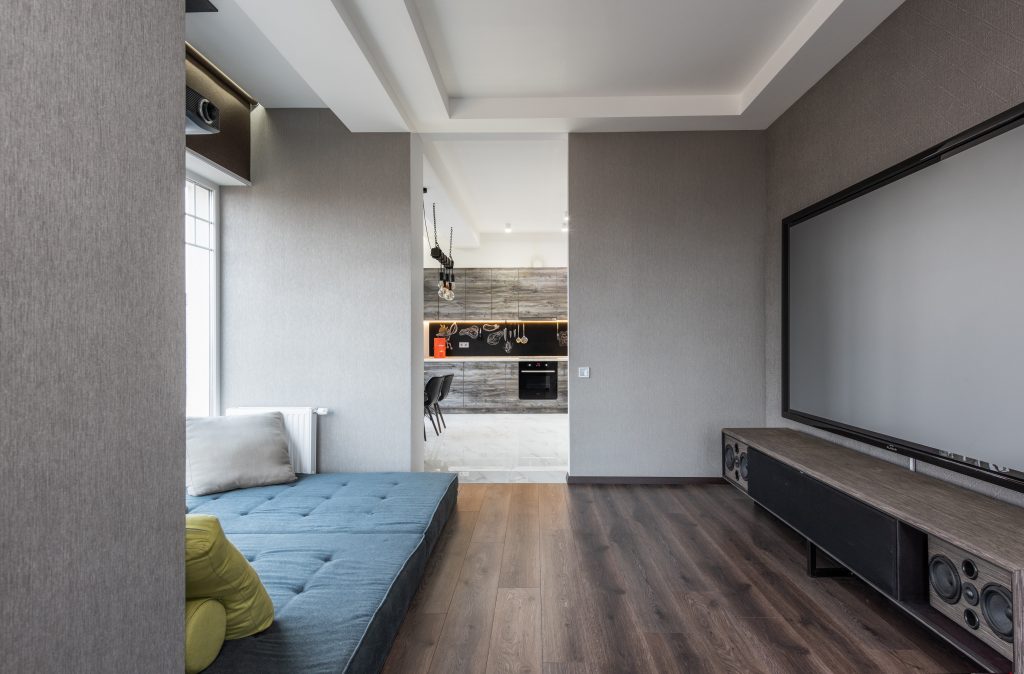
So there you have it, hopefully enough information to help you decide what to go for. If you are still undecided on the winner of the TV vs Projector debate, then we are on the same boat actually. There really is no clear winner overall but there is a clear winner for every different scenario. To wrap this up, here are a few scenarios and what would work best in each:
Scenario 1: The client has a living room space that has high ambient light, long room front to back and the space is going to be multi function. The client would like surround sound and dolby atmos.
Solutions: Large format TV with a dolby atmos surround system fed by an AVR would be the most suitable system here due to it’s multi-functional requirement and high ambient light.
To make this into a cinema, we could use a dropdown projector screen, and a high brightness projector along with a blackout curtain to reduce the ambient light levels. Movies can be watched on either the TV or projector depending on the situation.
Scenario 2: Client has a spare bedroom they want to watch movies in, however the kids will also play video games and have friends over to watch sports. The room is very small.
Solutions: A large TV on wall with a 5.1 surround system would suffice. A projector and screen here would not be good value considering the size and use of the space.
Scenario 3: The client has a double garage that they no longer use, it is completely dark, and there is more than average head height. They want somewhere to entertain friends and have cosy nights in watching movies with the family. They would not really use this space for anything else.
Solution: A Projector and Cinemascope screen would be perfect for this scenario, where the throw distance will give a perfect 36 degree viewing angle. Beyond this we would suggest a full acoustic treatment for the room and dolby atmos enabled surround system specified using the dolby atmos speaker positioning guide and a system capable of reaching reference level audio. Topped off with comfy cinema seating, a mini bar and plush carpets, this room would be very impressive and would ensure hours of fun for many years!
Thanks for reading, we hope you’ve found this article helpful!

